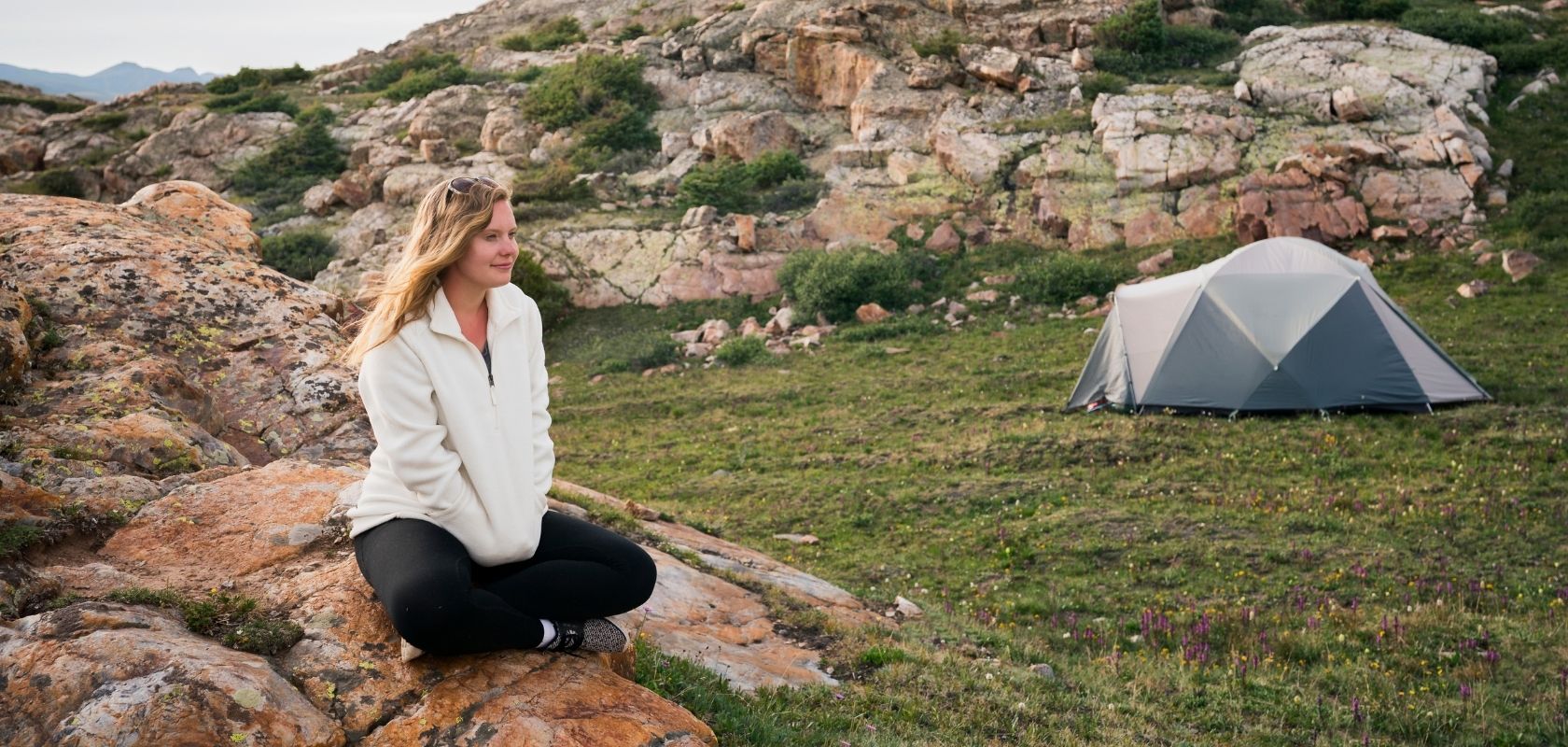FLEECE BUYING GUIDE
Once a fashion faux pas, the fleece is now a wardrobe staple for many outdoor enthusiasts. Whether using it as an outer layer or as part of a layering system on a cold day, fleece has huge benefits over other fabrics. But one fleece does not serve all needs, so we’ve put together this guide to help you make the best choice no matter what your outdoor activity.
History Of The Fleece
Before the 1980’s, layering usually meant using heavy, water absorbing wool or cotton fabrics. That all changed when Malden Mills invented Polarfleece in 1979, the mother of all technical synthetic fleeces. The fabric was revolutionary, it wicked moisture away from the body whilst keeping the wearer warm and dry like no other fabric had done before it, however the original fabric was prone to pilling.
In 1985 Patagonia released its Synchilla fleece jacket, the first mass produced, synthetic fleece produced with a non-pill texture. Companies, such as The North Face soon heavily invested into synthetic fleeces and within the next 20 years, synthetic fleece jackets took on a brace of design features that made fleece the preferred mid-layer for mountaineers, climbers, skiers and backpackers.
Materials And Construction
Quality of materials and construction used are important facets when it comes to making a great fleece. Long gone are the days of itchy, scratchy fleeces of the 80’s, today fleeces are made up of multiple fabrics, all providing a soft non-itch feel. It is becoming increasingly common to see brands using recycled materials, such as plastic bottles, to create synthetic fleeces. The two most common types of material used in fleeces are man-made synthetic polyethylene terephthalate and natural merino wool.
Synthetic
Usually made of a polyester fibre called polyethylene terephthalate, also known as PET, the synthetic fleece is known for its lightweight, warm and soft characteristics. Being a hydrophobic, the fibre repels water, meaning fleece holds less than 1% of its weight in water and retains much of its insulating properties when wet. Additional benefits of it being hydrophobic is that it is highly breathable, machine washable and quick drying. Fleeces come in a range of colours, patterns and designs with full zip, ¼ zip and pull over options, making them the perfect choice for any outfit and outdoor activity.
Merino
Natural fibres like merino wool can offer a far more sustainable option than the traditional synthetic fleece, for both the planet and yourself. Unlike the PET synthetic material, produced from stretched man-made plastics, merino wool is produced on the back of one of the toughest breeds of sheep, found in the rugged New Zealand southern Alps Range. Merino garments are soft and non-itch, warm in the cold and cool in the heat, they are highly breathable to prevent clamminess, and have a miraculous ability to warn off odour. Although merino wool garments are not true fleeces, they have eliminated some of the disadvantages of the traditional synthetic fleece.
| Feature | Synthetic | Merino |
|---|---|---|
| Material | 100% synthetic, usually polyester | Natural fibre, from Merino sheep |
| Warmth | Excellent insulation, traps air well | Excellent warmth-to-weight, insulates even when wet |
| Moisture Management | Highly moisture-wicking, quick-drying | Moisture-wicking, less quick-drying, absorbs more water |
| Breathability | Highly breathable | Highly breathable, regulates temperature naturally |
| Odour Resistance | Low; can get smelly quickly | Naturally odour resistant, stays fresh longer |
| Durability | Very durable, resistant to abrasion and pilling | Softer, may pill or tear if not blended with synthetics |
| Weight & Packability | Lightweight and compressible | Slightly heavier, but needs fewer layers for warmth |
| Best Use | High-intensity, wet or variable activities | Multi-day, cold, moderate activity, odour control |
Warmth
One of the main reasons of buying a fleece is to keep warm. However, a lot of people make the mistake of reaching for the warmest fleece on the shelf. When active your bodies temperature will rise and you may find yourself overheating is a too thick fleece. By wearing multiple, thinner layers you will have the option to remove and add layers when the weather dictates. In general, the weight of a fleece will determine its warmth.
Weight
Fleece weight refers to the loft and thickness of the material used in the jacket construction. The higher the number the higher the loft and warmth (weight). In general, there are three weights fleeces will come in:
- 100 Lightweight
- 200 Midweight
- 300 Heavyweight
A lightweight fleece is ideal for high output activities or as a mid-layer under another fleece or shell jacket on a moderately cold day. Lightweight fleeces are more breathable and provide adequate warmth for active pursuits.
Midweight fleeces are the most versatile, they can work well as an outer layer during cool temperatures but can also be incorporated into a layering system for cold days. Just like lightweight fleeces, these are highly breathable but benefit from extra insulation.
Heavyweight fleeces are the least versatile of the fleeces. They are generally less breathable and bulkier than lighter options. However, they work well as a standalone layer in cooler temperatures.
Breathability
Another key element to think about when buying a fleece is breathability. When active your bodied temperature rises, and sweat is produced to cool ourselves down. Having a breathable layer means that this perspiration is wicked away from the body keeping you dry and warm.
Breathability, as already mentioned has a direct correlation with the weight of the fleece, a lighter fleece will be more breathable, however, this does not mean that a heavyweight fleece cannot be breathable. As of late, companies have started to use a variation of thicknesses on a single jacket, utilising a heavyweight fleece for a high degree of warmth and a lighter weight fleece, in key areas to maximise breathability.
Another method to maximise breathability is variability in fabric thickness which comes in a more micro level. Often referred to as “grid” style, the inside of the fleece appears to be checkered with thin channels in between thicker squares. These thin channels provide a small gap between the material and the wearers skin which allows sweat to evaporate naturally.

Drawbacks
Although the fleece is one of the most favoured piece of layering between outdoor enthusiasts, it is still far from perfect. Like any piece of layering it has its drawbacks. Synthetic fleeces are hydrophobic, meaning they repel water and have quick drying abilities but they are not waterproof, nor windproof. A fleece should be worn under a water/windproof hardshell as a part of a layering system, when in wet, windy or snowy conditions.
The traditional synthetic fleece hydrophobic properties, also has a draw back. Due to its water replant tendencies, the fleece also repels cleaning products, this can lead to a build-up of bacteria and odours. Unlike the synthetic material, merino wool jackets have anti-microbial properties that fight off bacteria and odours.
Features
Companies continuously design and redesign fleeces by adding and changing features. Most fleeces have features that can be instrumental in beating the cold, such as long sleeves, a short stand up collar and some configuration of pockets. These are just a few key features the can seriously elevate the performance of a fleece.
Anti Pill
An anti-pill fleece has been treated to prevent little balls of thread appearing on the surface of the fabric. These pills of threads are the result of abrasion when washing and dying, that can affect the fleeces heat capabilities.
Hoods
A hood adds a lot of versatility to any jacket, it gives the option to increase warmth without the decrease of breathability. However, a hood, in some situations can be a hindrance. When wearing a hooded fleece under a waterproof or ski jackets the added material can bunch up around the neck, causing discomfort. In these situation, a hoodless fleece is more comfortable and less cumbersome.
Pockets
The ideal arrangement of pockets ultimately comes down to the intended use of the fleece. Hand warmer pockets are standard for most fleece jackets, if you are climbing with a harness on, make sure the hand warmer pockets sit above the hips so then can be used even with gear on. Additional chest, sleeve and interior pockets give the wear plenty of options for carrying small items.
Zips
Fleeces come in a range of different constructions from pullovers with ¼ and ½ length zips to fully zipped jackets style fleeces. Zips have two main purposes on a fleece, the first to help breathability to cool down when overheating. The second is accessibility. Usually worn as a mid-layer the fleece should be easy to take off and put back on. A fully zipped jacket will be better for accessibility, however adds weight and creates a longer seam for heat to disperse through.
Thumb Loops
A controversial feature that some people praise, whilst other hate. Thumb loops help to keep the layer in place with a thumb loop in the cuff. These thumb loops, allow the sleeves to extend down to mind palm adding comfort and stopping from the sleeves from riding up whilst active.
Fit and Cut
The fit and cut of the fleece is the final area to look at. Generally speaking, fleeces are made with a slightly longer cut in the torso. This extra length allows the layered piece to be tucking in without falling out during activity.
The over-all fit of the fleece, depends on its intended us. If worn over other layers, the fleece should have enough room underneath, so not to restrict movement. A fleece used as a mid-layer, should be relatively snug fitted to maximise heat and breathability.
Fleece FAQs
Fleece jackets come in various types: microfleece (lightweight for layering), standard fleece (midweight for general warmth), and heavyweight or thick-pile fleece (for maximum insulation). Consider how and when you’ll use your fleece—active pursuits often need a lighter, more breathable layer, while cold winter weather benefits from thicker insulation.
Fleece is naturally water-resistant and dries quickly but is not fully waterproof or windproof. For wet or windy conditions, pair your fleece with a waterproof or windproof shell to stay protected on the slopes or outdoors.
Choose a fit based on your intended activity. For layering during active sports, opt for a snug fit. For casual use or extra warmth, a looser fit works well. Always check size charts and consider space for base layers beneath the fleece.
Wash fleeces on a gentle, cold cycle without fabric softeners to maintain softness and avoid damage. Air dry or use low heat to reduce the risk of shrinkage or pilling. Occasional use of a fabric shaver helps keep your fleece looking fresh.
Yes, many brands offer fleeces made from recycled polyester or responsibly sourced wool. Look for products labeled as “recycled,” and check for certifications indicating sustainable materials and ethical manufacturing practices.
Fleece is generally hypoallergenic, especially natural fibres like merino wool fleece. Synthetic fleeces are soft and rarely irritate skin but always check product details if you have sensitivities.
Related Articles

Let us know you agree to cookies
We use marketing, analytical and functional cookies as well as similar technologies to give you the best experience. Third parties, including social media platforms, often place tracking cookies on our site to show you personalised adverts outside of our website.
We store your cookie preferences for two years and you can edit your preferences via ‘manage cookies’ or through the cookie policy at the bottom of every page. For more information, please see our cookie policy.





